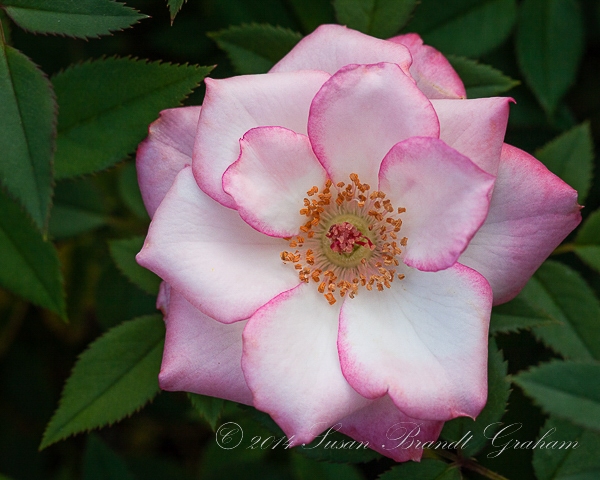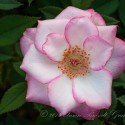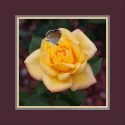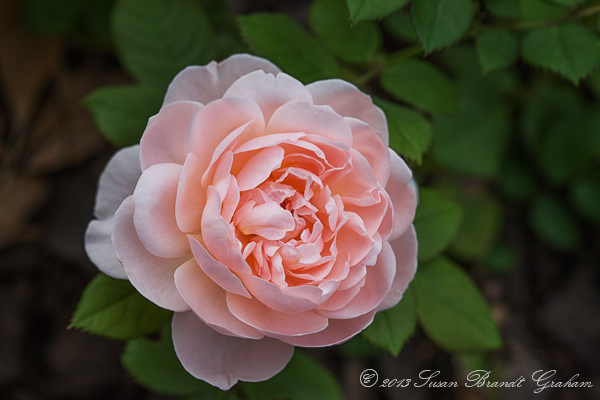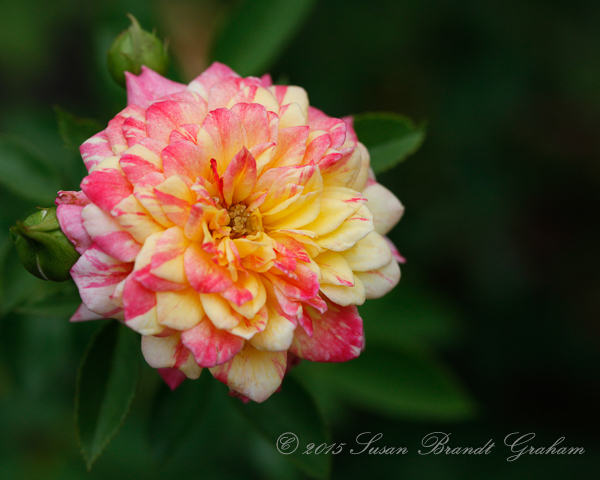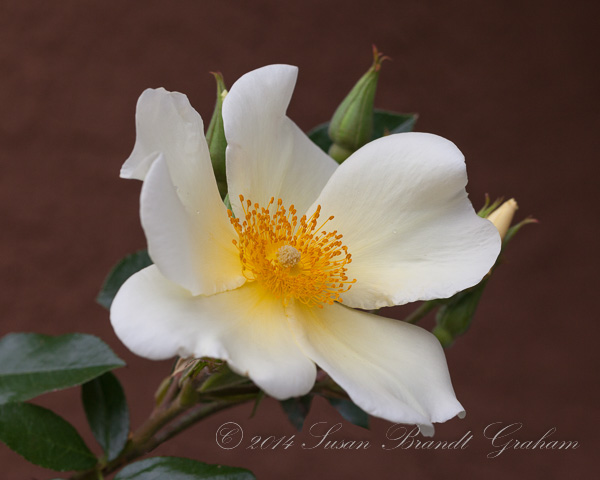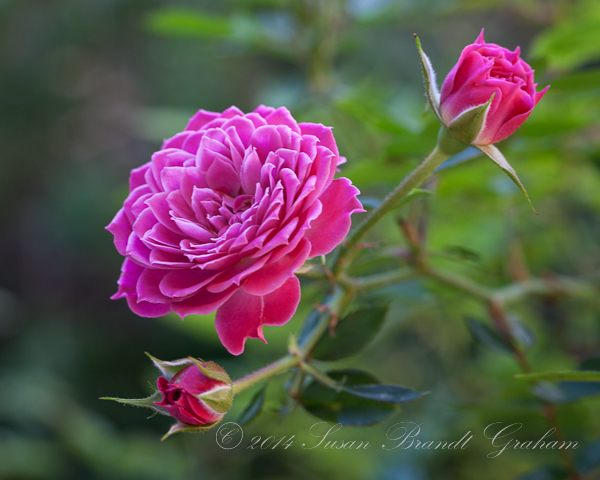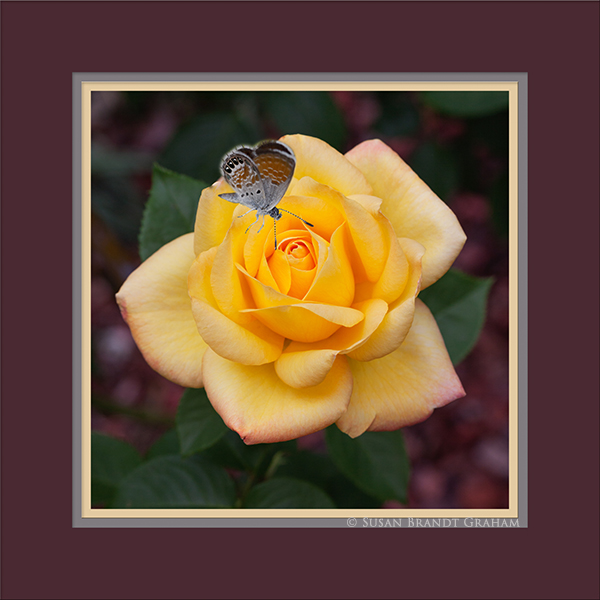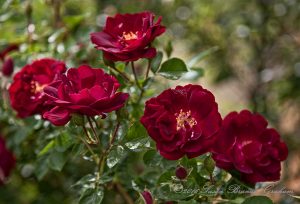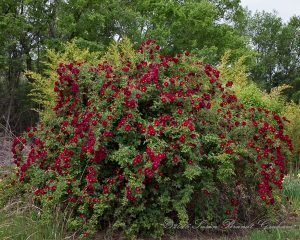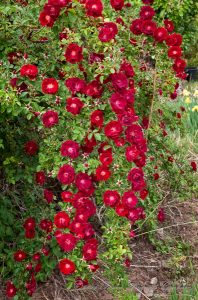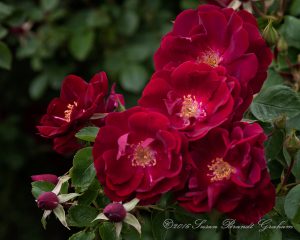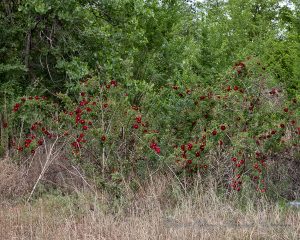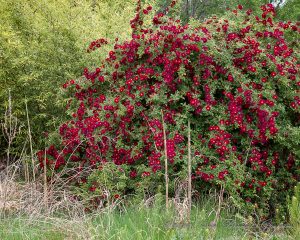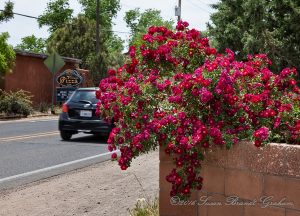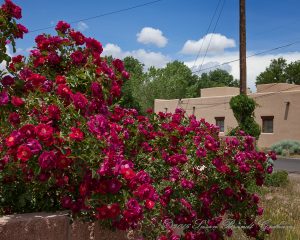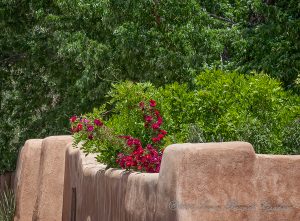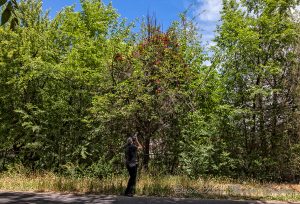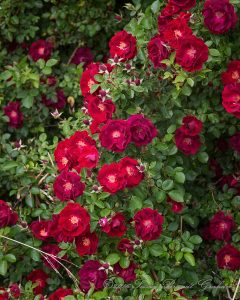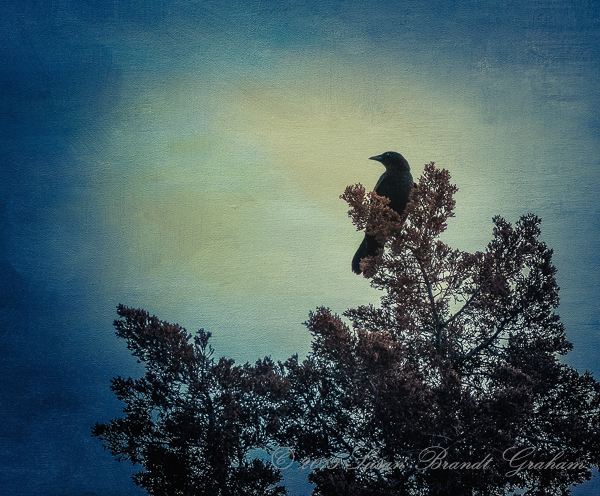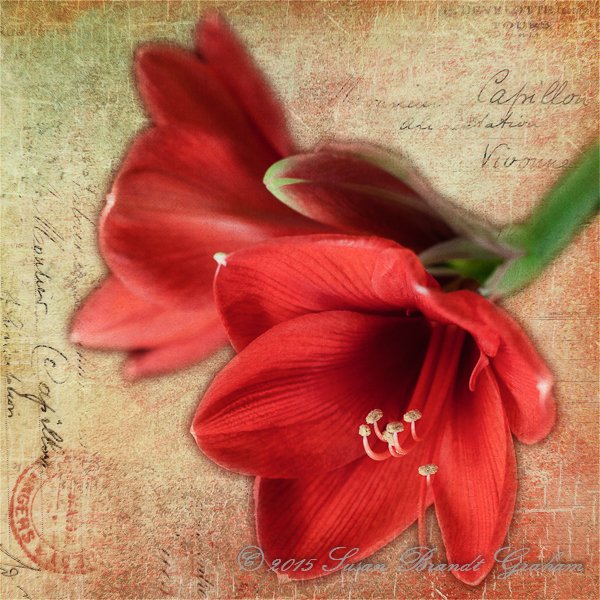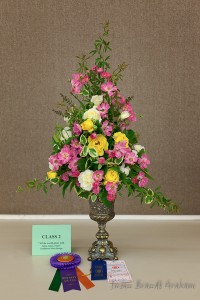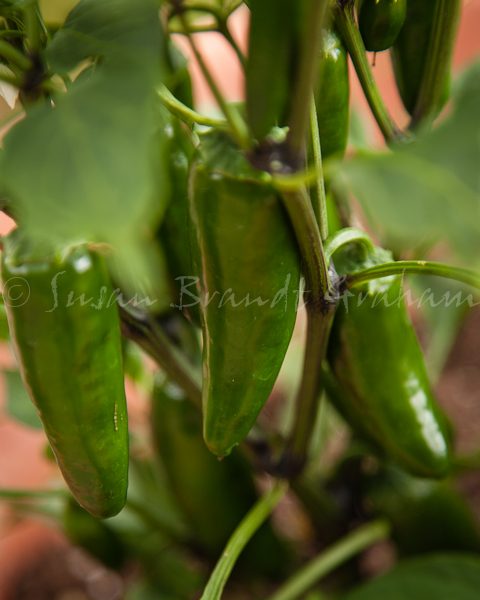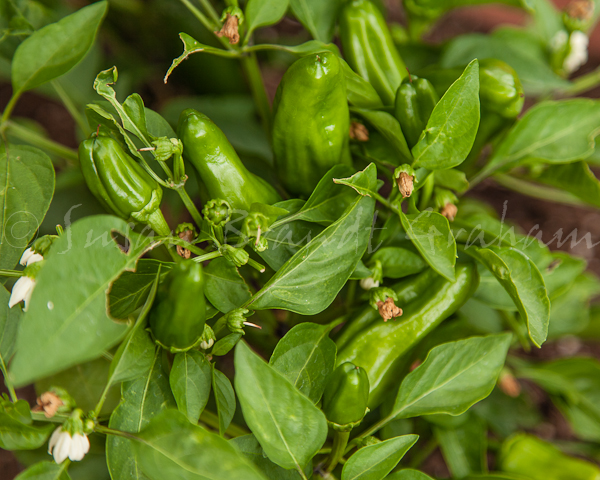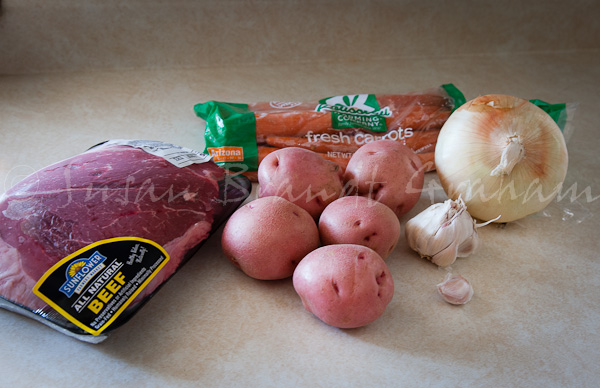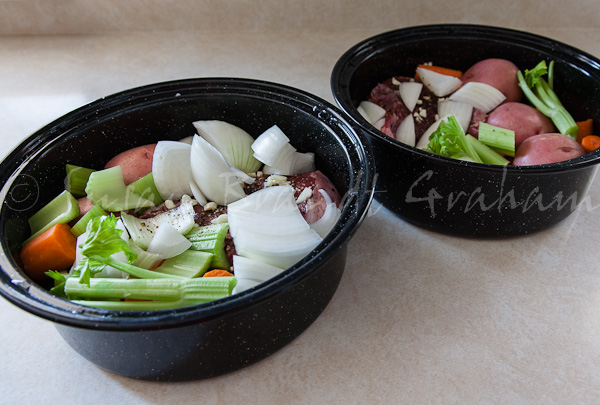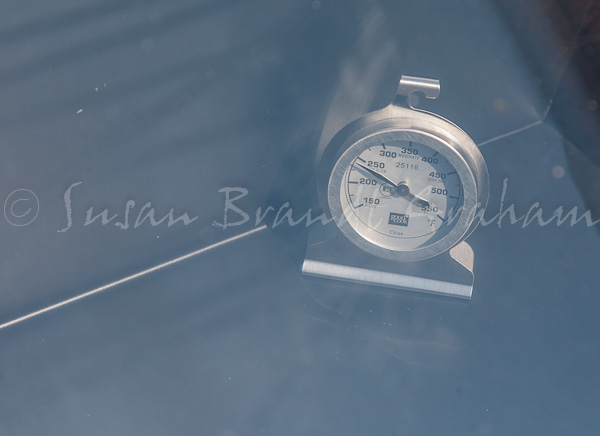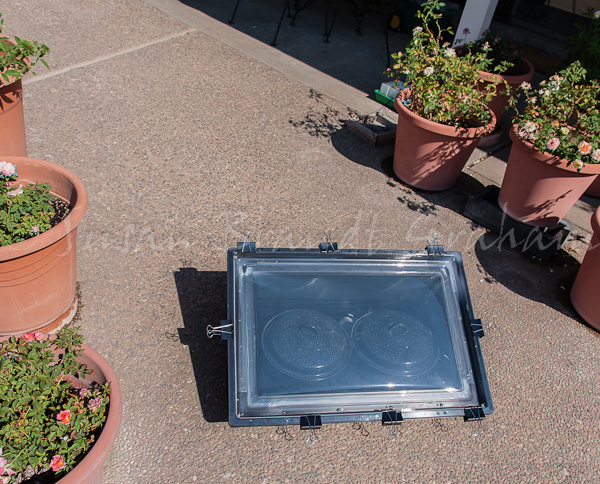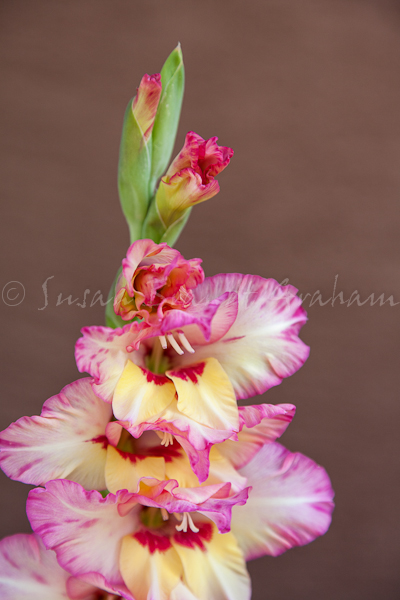Rose Blooms Not of Exhibition Quality – Can Photographers Do Anything with Them?
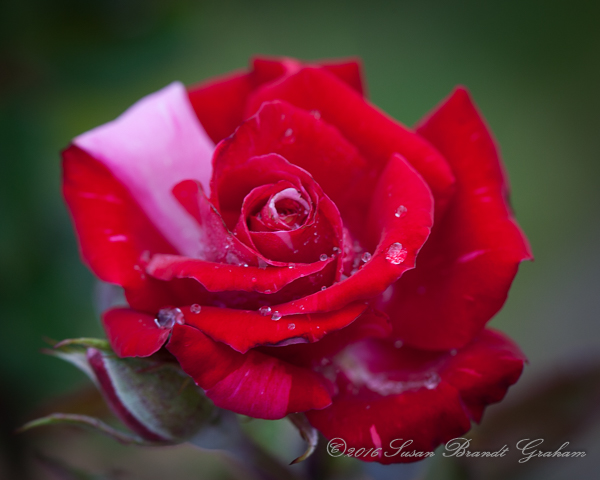
Great Form! Major color faults and not disbudded!
Rose blooms of less than exhibition quality sometimes have some features that photographers enjoy and/or find challenging. Photographs of such rose blooms are not a problem outside of ARS (American Rose Society) shows. However, in the horticultural photography classes in ARS shows, photographs of imperfect specimens are no more welcome than the actual specimen would be. Does this mean the photographer should just “walk on by” and not “stop to smell the roses?” Each person has to answer that question for him/herself. I would like to suggest some ways to enjoy these roses, and perhaps also create an image people enjoy and can be entered in ARS shows.
First and foremost, photographing any and all rose blooms is one way to work on photography skills. You can try different camera settings, explore different lighting conditions, learn if you personally prefer photographing cut specimens or specimens growing in the garden. For entry in ARS shows, all specimens must be outdoor garden grown. Photographs for shows may be of either cut specimens or specimens still growing in the garden. The more you photograph roses, the better you will become as a photographer and the more you will know your own preferences. You will develop your own “style.” Other people may recognize it before you do.
First Example
ARS members may access the Guidelines for Judging Rose Photography here.
One Class is
One Spray: Two or more blooms, any type of rose of Hybrid Tea, Grandiflora, Miniature, Miniflora, or
Floribunda classifications of roses. This class does NOT include collections.
Photography judges not infrequently encounter collections of roses, rather than sprays. When detected, these are not judged.
When I plan to show a photograph of a rose spray, I usually try to show the origin of the entire spray. That is personal preference and certainly not required. For illustration, this is a spray of ‘Dream Weaver.’
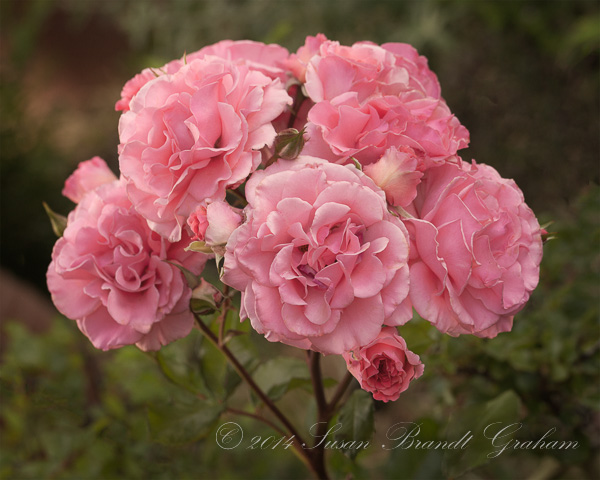
Spray of ‘Dream Weaver’
Not too long ago I was photographing Veterans’ Honor. At first glance, what I took to be a spray, turned out to be a spray of two blooms and a stem with one bloom. I liked the flow and the rhythm of the collection but could not enter it as a “Spray.”
One of my favorite Classes is
Creative Interpretation
The photograph should evoke a sense of originality and a new and different way of imagining the rose or roses with the mind’s eye. This may include processes used to alter the original image such as colorizing, texturing, dodging, burning, dithering, painting, shadowing, blurring, layering, cloning, filtering, merging, cropping. Color, Black & White, Sepia, or combinations of these are permitted in this class. Photo enhancement software is permitted in this class.
In this class, pretty much anything goes, which is one reason I like it. The collection of Veterans’ Honor could be shown in this class, no problem. My personal preference in my own work is to try to maintain the beauty of the rose when I make alterations using software. That is by no means a requirement for this class, but it is what I personally try to do.
I decided to create a black and white image. Those of you who work with digital black and white know that there is no single “Black and White.” I wanted something soft and gentle, almost with an old fashioned look. Although the roses may appear to be in a vase, I photographed them on the bush, growing close to the back wall of my house. I was satisfied with the outcome.
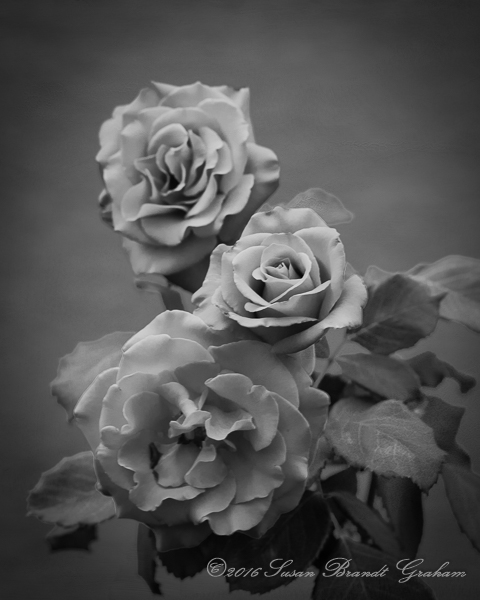
A Collection, Not a Spray
Second Example
Another Class is
One bloom.
One bloom, no side buds, of Hybrid Tea, Grandiflora, Miniature, Miniflora, or Floribunda classifications of roses.
These are the exhibition form roses people tend to think of when they think of “rose.” Judges have specific guidelines for judging specimens in the horticultural portion of a rose show, and those same judging points count for 40% of the score of a photograph of one bloom of a rose. Form is extremely important in this class. This is a rose with great form, but it has just a few problems. 🙂
Roses are on the market that are visually similar to the one at the top of this post. However, this bloom should be solid red. The pink/white is a color fault, a major color fault. Judges would severely penalize this bloom. As if that were not enough, this rose has not been disbudded. You can clearly see the side bud in the lower left. The color fault and side bud are the two biggest problems here, but some judges would also deduct points for the rain drops. Rain drops personally do not bother me, but knowing how some judges view them, I tend not to enter in ARS shows images of roses with rain drops on them. In spite of all of those problems, it is a beautiful rose with great form. But, you wouldn’t show the specimen in a rose show, and if you want to show it photographically, you need to get a little creative.
As I have mentioned before, I am not fond of one-click photo editing filters that detract from the beauty of the rose. Creative Interpretation is the only class in which this image could be entered. But, I would have to change it in some way.
I spent a significant amount of time working with this image to achieve an effect I liked. I settled on this crimson/silver, which made the raindrops look like ice. This may be my Christmas card.
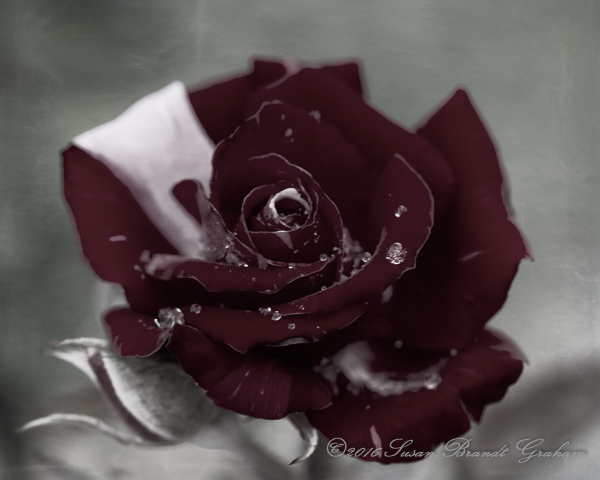
Digitally Altered for Creative Interpretation Class
Summary
If you see something visually interesting in a rose that you ordinarily would not enter as a specimen in a rose show, photograph what you find visually interesting. Then consider what you can do with it to be able to share it with others. The Creative Interpretation class allows plenty of options for showing the beauty in a bloom or rose blooms that otherwise might never be seen.
Post Script
Will I show these images as entries in a rose show? Probably not, given that I am showing them here for teaching and illustration purposes. But I would like to add that when working with rose images, I nearly always begin by cropping the digital image from the most usual digital camera ratio of 3:2 to a ratio for an 8×10 print, a 5:4 ratio. Prints ranging from 5×7 up to 8×10 are allowed by the Guidelines. For me, the 8×10 is large enough for the details to be seen the way I like for them to be seen.
Additionally, as I have pointed out previously, mounting and matting per the requirements of the Guidelines can be done by purchasing sets for this purpose in multiples of ten or more. These are available in a variety of places, but these are the ones I use:
I print my own images, and the cost to prepare an image for entry is around $3.00. Cost should not be a prohibiting factor for exhibiting your images in a rose show.
I have explained elsewhere how to easily and quickly mount and mat your images to meet specifications. For those who would like that info handy on a mobile device, it is available in Kindle form for $0.99. That is the lowest price Amazon would allow me to charge and still offer it there for convenience.
Above all, when you see something visually interesting in rose blooms, photograph them. Then consider what you might be able to do to share that with others through a photograph. And, enjoy the process!
Like this:
Like Loading...
